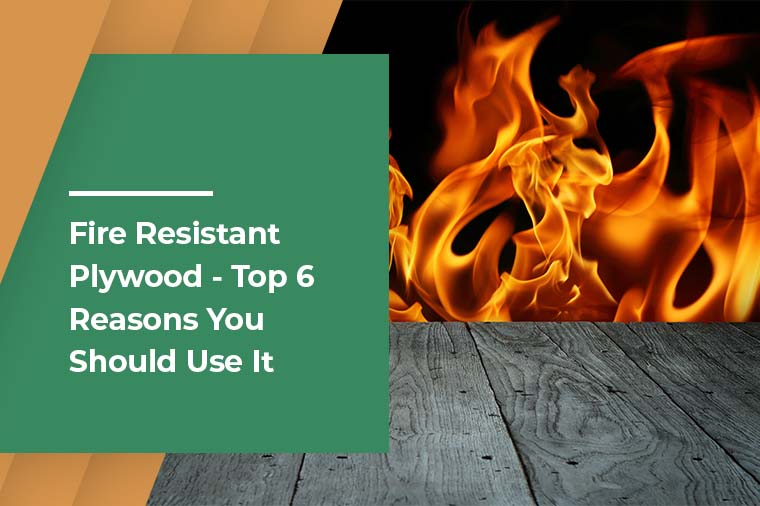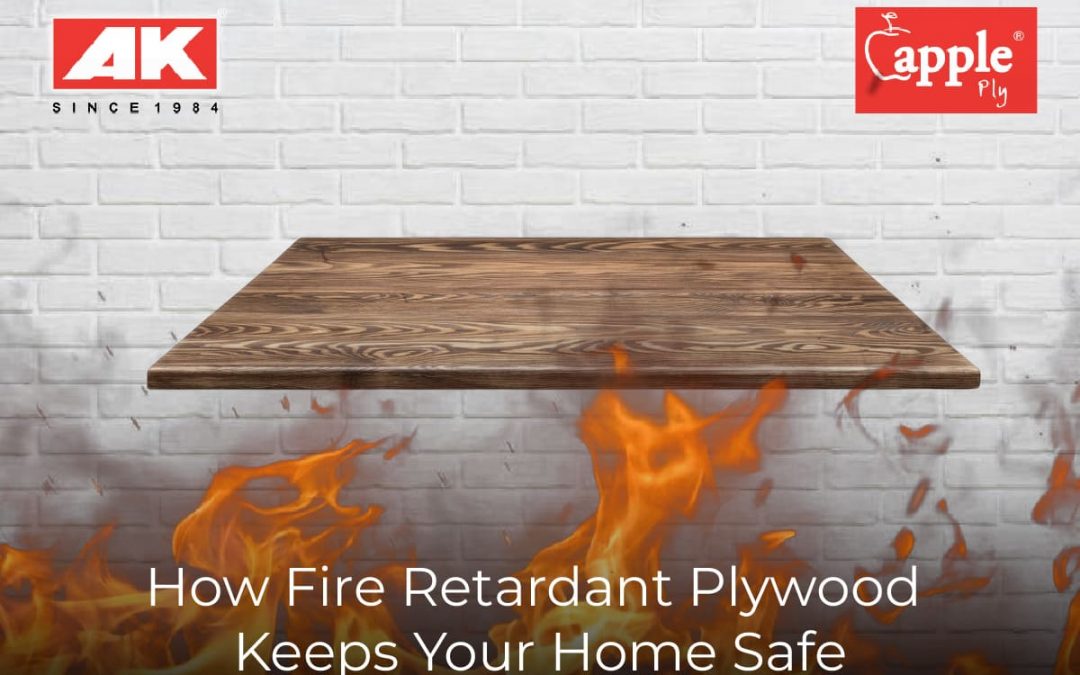Wondering if plywood walls are a fire hazard? Let’s dive into the facts! 🔥
Plywood walls are a popular choice for many homeowners due to their affordability and versatility. But when it comes to fire safety, it’s essential to understand the risks involved.
🔹 First off, plywood itself is not inherently fire-resistant. It’s a wood product that can burn when exposed to flames or high heat.
🔹 However, the fire hazard of plywood walls can be mitigated by implementing proper fire safety measures and building codes. Let’s explore these further!

Are Plywood Walls a Fire Hazard?
Plywood is a popular material used in construction and interior design. It offers durability and affordability, making it a suitable choice for various applications, including walls. However, when it comes to fire safety, concerns may arise about plywood walls. In this article, we will explore whether plywood walls are a fire hazard, examine their fire resistance properties, and discuss safety measures to mitigate any potential risks.
The Fire Resistance of Plywood Walls
When it comes to fire resistance, plywood walls can provide a certain level of protection. Plywood is made from multiple layers of thin wood veneers that are glued together, which can give it some inherent fire resistance. The layers of wood and the glue used in plywood contribute to its ability to withstand fire to a certain extent. Plywood has been classified as a Class A or Class B material in terms of fire resistance, depending on its thickness and other factors.
However, it is important to note that plywood is not entirely fireproof. In the event of a fire, plywood walls can still contribute to the spread of flames if not properly treated or protected. The specific fire resistance capabilities of plywood walls will depend on various factors, including the thickness of the plywood, the presence of additional fire retardant materials, and the overall construction of the wall system.
Safety Measures and Fire Prevention
To minimize the potential fire hazard of plywood walls, various safety measures can be taken:
1. Fire-retardant treatments: Plywood can be treated with fire-retardant chemicals to enhance its fire resistance. These treatments can help slow down the spread of flames in the event of a fire.
2. Intumescent coatings: Intumescent coatings can be applied to plywood walls to provide an additional layer of fire protection. These coatings expand when exposed to high temperatures, forming a char that acts as a barrier against flames and heat.
3. Proper installation: Plywood walls should be installed according to building codes and regulations to ensure proper fire safety. This includes using appropriate materials, techniques, and fire-rated systems when necessary.
4. Fire detection and suppression systems: Installing fire detection and suppression systems, such as smoke detectors, sprinklers, and fire extinguishers, can help detect and suppress fires before they can spread to plywood walls or other parts of a building.
It is important to consult with professionals, such as architects, engineers, and fire safety experts, to ensure that plywood walls are installed and maintained in a manner that adheres to safety standards and minimizes the risk of fire hazards.
The Benefits and Versatility of Plywood Walls
Despite the considerations regarding fire hazards, plywood walls offer several benefits and are widely used for various reasons:
1. Strength and durability: Plywood is known for its strength and durability, making it a reliable material for constructing walls. It can handle different weather conditions, resist warping, and provide stability.
2. Cost-effective: Plywood is generally more budget-friendly compared to other wall materials, such as solid wood or stone. It offers good value for money without compromising on quality.
3. Lightweight: Plywood is lighter than solid wood or concrete, which makes it easier to handle during installation. This can be particularly advantageous for large-scale construction projects.
4. Design flexibility: Plywood walls allow for creative design possibilities due to their versatility. They can be easily cut and shaped to fit various architectural designs and can be stained, painted, or veneered to achieve different aesthetics.
5. Sustainability: Plywood is often sourced from sustainably managed forests, making it an environmentally friendly option. Additionally, using plywood in construction projects can reduce waste as it is made from thin veneers that maximize the yield from each tree.
In conclusion, while plywood walls can provide a certain level of fire resistance, they are not entirely fireproof. Implementing appropriate safety measures, such as fire-retardant treatments, intumescent coatings, proper installation, and the use of fire detection and suppression systems, can help mitigate any potential fire hazards. It is important to consult with professionals to ensure that plywood walls are installed and maintained according to safety standards. Overall, plywood walls offer numerous benefits and versatility in construction and interior design.
Key Takeaways: Are Plywood Walls a Fire Hazard?
- Plywood walls can be a fire hazard if not properly treated with fire-resistant coatings.
- It is important to check local building codes before using plywood walls as fire safety regulations vary.
- Applying fire-retardant sprays or paints to plywood walls can improve their fire resistance.
- Adding a layer of gypsum board over plywood walls can help enhance their fire resistance.
- Regular maintenance and inspections are essential to ensure plywood walls remain fire-resistant over time.
Frequently Asked Questions
Welcome! In this section, we’ll address some common questions related to plywood walls and their potential fire hazards. Read on to find out more!
Can plywood walls catch fire easily?
Plywood walls have a lower fire resistance compared to other materials, such as drywall. While plywood itself is not highly flammable, it can contribute to the spread of fire if not properly protected. Unprotected plywood can ignite and provide fuel for a fire, potentially causing it to spread more rapidly within a building.
However, it’s important to note that plywood can be treated with fire retardant coatings or installed with fire-resistant materials, such as gypsum board or plaster, to increase its fire resistance. These measures can significantly reduce the fire hazard associated with plywood walls.
How can I make plywood walls more fire resistant?
If you have plywood walls and want to make them more fire resistant, there are several steps you can take. One option is to treat the plywood with fire retardant coatings. These coatings can slow down the spread of fire and reduce the amount of heat released during a fire.
Another approach is to install fire-resistant materials over the plywood, such as gypsum board or plaster. These materials provide an additional layer of protection, preventing the ignition of the underlying plywood and slowing down the spread of fire. Consulting with a professional contractor or fire safety expert can provide you with further guidance on making your plywood walls more fire resistant.
Are plywood walls allowed in commercial buildings?
In many cases, plywood walls are allowed in commercial buildings as long as they meet fire safety codes and regulations. These codes typically require specific fire resistance ratings for walls based on the building occupancy and the height of the structure.
It’s important to consult the local building codes and regulations in your area to ensure that your plywood walls comply with the necessary requirements. Additionally, obtaining the expertise of a qualified architect or contractor who is knowledgeable about fire safety regulations can help you navigate the specific guidelines for plywood walls in commercial buildings.
Are there any alternatives to plywood for fire-resistant walls?
Yes, there are alternative materials that offer higher fire resistance compared to plywood. One commonly used material is drywall or gypsum board. Drywall is made of gypsum plaster sandwiched between two layers of paper, providing better fire resistance than plywood.
Other options for fire-resistant walls include cement board and metal panels. These materials are specifically designed to withstand high temperatures and reduce the risk of fire spreading. When selecting materials for fire-resistant walls, it’s crucial to consider the specific requirements and regulations for your building and consult with professionals in the field.
Should I be concerned about plywood walls in my home?
If your home has plywood walls, it’s important to assess their fire resistance and take appropriate measures to ensure your safety. Depending on the age of the home and the local building codes, plywood walls may have different levels of fire resistance.
You can consult with a fire safety expert to evaluate the fire resistance of your plywood walls and determine if any improvements or modifications are necessary. Options may include treating the plywood with fire retardant coatings or considering alternative fire-resistant materials. Prioritizing fire safety in your home is crucial for the protection of your family and property.

Summary
Plywood walls can be a fire hazard because they burn easily and spread flames quickly. The glue used in plywood can release toxic gases when it burns, making it even more dangerous. It is important to ensure proper fire safety measures when using plywood walls.
In order to minimize the risk, it is crucial to follow building codes and regulations. Installing fire-resistant materials such as drywall or fire-rated plywood can help reduce the fire hazard. Regular maintenance and ensuring that fire alarms are in working order are also important safety precautions to take. By being aware of the potential dangers and taking necessary precautions, we can mitigate the fire hazard associated with plywood walls.
